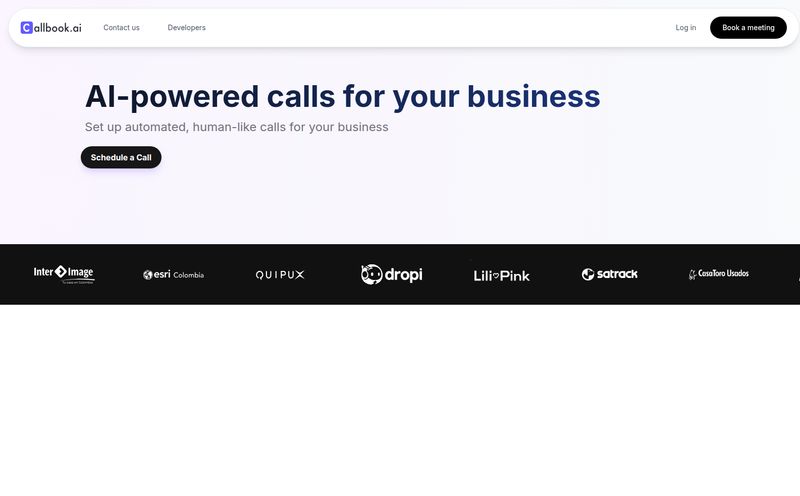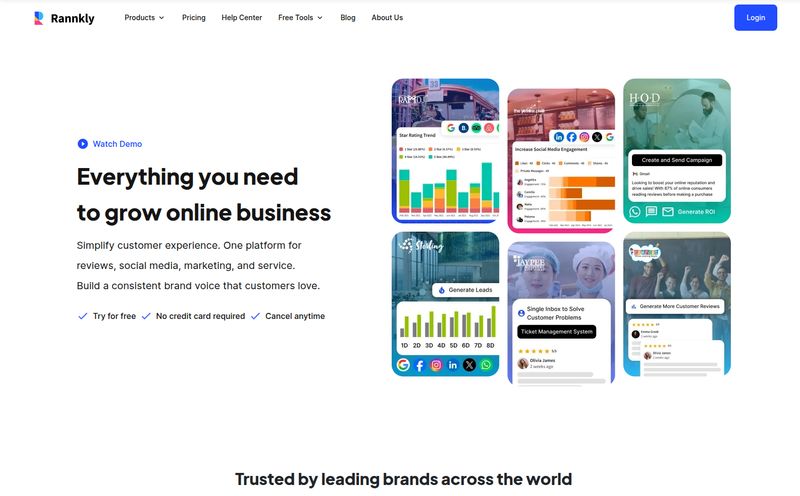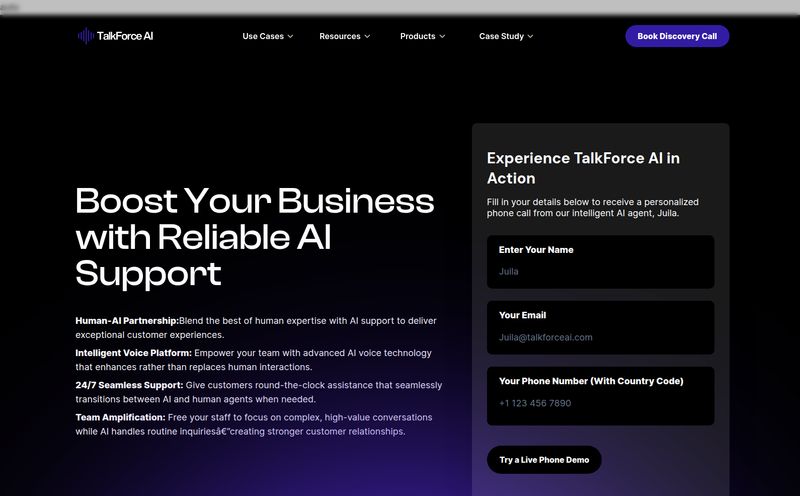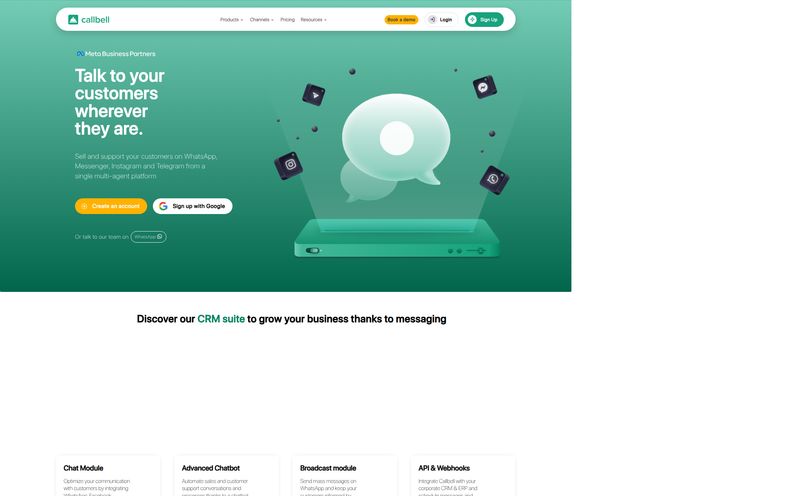Another Monday, another 157 unread emails. Sound familiar? For years, I’ve been in the trenches of SEO and traffic generation, but the dirty little secret of our success is the digital avalanche that follows: the inbox. It's a relentless monster that eats time, kills productivity, and sometimes, buries golden opportunities. We’ve all been there—missing a hot lead because it was sandwiched between a newsletter and a meeting reminder. So when a tool like CX Assist lands on my radar, promising to tame this beast with AI, my professional curiosity gets the better of me. But is it just another shiny object in the ever-growing pile of AI tools, or is it the real deal?
What Is CX Assist, Really?
At its heart, CX Assist is an AI assistant that lives in your inbox. Think of it less as a simple auto-responder and more like a hyper-intelligent receptionist you’ve trained yourself. It doesn’t just send a generic “We’ve received your email” reply. Instead, it reads incoming mail, understands the context based on your business data, and crafts a personalized, relevant response. The goal? To make your customers and leads feel heard, instantly, while you focus on... well, not drowning in email.
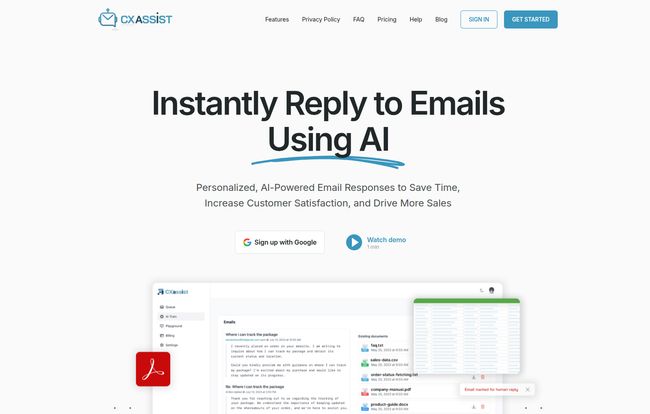
Visit CX Assist
How Does This AI Magic Actually Work?
The 'how' is refreshingly simple, broken down into three steps that even the most tech-phobic person can handle. No complex coding, no needing to hire a developer. Thank goodness.
Step 1: Giving Your AI a Brain (The Training)
This is the secret sauce. You feed the AI with your own content. Point it to your website URL, let it scan your 'sent' folder to learn your tone, or upload documents like FAQs, product guides, and company manuals. The more you give it, the smarter it gets. It's like sending your new hire to a week-long onboarding, but it takes minutes.
Step 2: Playing Traffic Cop (The Rules)
Next, you set the ground rules. You can create different 'personas'—like a friendly Support agent, a direct Sales pro, or a generalist. You can tell it which emails to ignore (like internal comms from your own domain) and, crucially, set keywords that automatically escalate an email to a real human. An email with 'urgent' or 'complaint'? Yeah, that one goes straight to you. This blend of automation and human oversight is what makes it so practical.
Step 3: The Fun Part (Letting Go)
Once the training and rules are set... you just let it run. It watches your inbox, analyzes new messages, and shoots back helpful, on-brand replies. You're free to work on high-impact stuff. It’s a strange feeling at first, trusting an AI with your client communication, but watching it work is pretty magical.
Who Is This For? (And Who It Might Not Be For)
CX Assist isn't trying to be a one-size-fits-all solution, which I respect. It's built for specific people feeling specific pains. For instance:
- E-commerce Stores: Imagine instantly answering "Where is my order?" queries 24/7. That alone is a game-changer for customer satisfaction and reducing chargebacks.
- Sales Teams & Solopreneurs: Never let a lead go cold again. An instant reply to an initial inquiry can be the difference between a closed deal and a missed opportunity. That first touchpoint is critical.
- Marketing Agencies: You can use it to provide immediate responses to client requests or campaign questions, keeping communications smooth and your clients feeling valued.
- Customer Support: Handle the flood of repetitive questions automatically, freeing up your human support staff to tackle the truly complex, high-touch issues.
The Good, The Bad, and The AI
Alright, let's get down to the nitty-gritty. No tool is perfect, and it’s my job to give you the unvarnished truth.
What I'm Genuinely Excited About
The time-saving is obvious. But what really stands out is the personalization at scale. It’s not just inserting a first name. It’s referencing your specific return policy or product features because you taught it that information. It supports over 50 languages, which is huge for businesses with a global footprint. And the fact that it can actually drive more sales by ensuring prompt follow-up is a massive plus. It turns a cost center (support email) into a potential profit center.
A Few Things to Keep in Mind
Now for the reality check. Currently, it can't read attachments. So if your workflow relies heavily on customers sending you PDFs or images, you'll still need a human to step in. The integrations are also a bit limited right now—it plays nice with Instantly, but that’s about it (though they say more are on the way). Also, one CX Assist account handles one email inbox. If you have multiple support or sales addresses, you’ll need multiple accounts. It's not a dealbreaker, but something to factor into your budget and workflow.
Let's Talk Money: CX Assist Pricing
Okay, the big question: what's this gonna cost me? The pricing structure is refreshingly straightforward and, in my opinion, very fairly priced.
| Plan | Price | Emails/Month | Best For |
|---|---|---|---|
| Free | $0 | 50 | Just dipping your toes in. A "perpetual trial" to see if you like it. No credit card needed. |
| Pro | $15 / month | 5,000 | Small businesses, freelancers, and solopreneurs with a steady stream of emails. |
| Scale | $150 / month | 50,000 | Larger businesses or support departments with high-volume inboxes. |
I've got to say, that Free plan is a smart move. 50 emails a month is enough to actually test its capabilities without any commitment. The jump from Free to Pro at $15 is incredibly reasonable for the value it provides. A real human assistant would cost you that much in about 30 minutes.
Your Burning Questions Answered (Probably)
I've rounded up some common questions from their site and added my own spin.
So, does it work with my email?
Most likely, yes. It supports Google, Microsoft, and any email account you can connect via IMAP. So whether you’re on Gmail, Outlook, or your own custom domain, you should be covered.
Is it secure? My emails have sensitive info!
This is a big one. They state they only use your email information via official APIs with Google, Microsoft, and OpenAI. They don't sell or share your information. This is standard practice for reputable tools, but as always, read the privacy policy for yourself.
What if the AI gets confused and sends a nonsense reply?
It happens with any AI. If CX Assist gets an email it can't handle confidently, it won't just guess. It will forward the email to a specific human address you designate in the settings. This 'human override' is your safety net.
Can I review the AI's emails before they go out?
Yep! There's a 'draft mode' you can enable. This puts the AI-generated response in your drafts folder first. You can then give it a quick once-over, make any tweaks, and hit send yourself. A great feature for control freaks like me.
Is it just another fancy auto-responder?
Honestly, no. I've used basic auto-responders. They're dumb. They send the same message to everyone. CX Assist is different because it's trained on your content and can craft unique replies based on the content of the incoming email. It's a whole different league.
Can I cancel anytime?
Yes. They state there are no contracts, and you can cancel anytime. I love to see that kind of flexibility.
My Final Take: Is CX Assist Worth It?
After digging through it, I'm genuinely optimistic about CX Assist. It’s not a magic wand that will solve every business problem, but it tackles one of the biggest time-sucks we all face: the inbox. For solopreneurs, e-commerce brands, and small support teams, the potential ROI here is massive. It’s the closest thing I’ve seen to cloning yourself to handle customer inquiries.
The limitations are real, particularly the lack of attachment reading. But for the vast majority of text-based inquiries, this tool could be a lifesaver. It’s a practical, well-designed application of AI that solves a real-world problem. And with a free plan to test the waters, there's really no reason not to give it a shot.
Take back your time. Your inbox will thank you.
References and Sources
For more details, you can check out the official website and pricing information directly.
